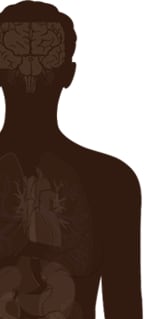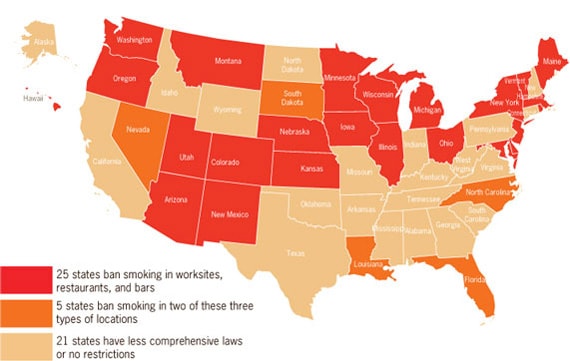Tobacco Use
Smoking & Secondhand Smoke
September 2010



46.6M
About 1 in 5 adults smoke.

40%
4 out of 10 nonsmokers(88 million people) are exposed to secondhand smoke.

54%
More than 1 out of 2 kids(aged 3–11 years) are exposed to secondhand smoke.
Tobacco use is the leading preventable cause of death, disease, and disability in the US. Each year, around 443,000 people die from smoking or exposure to secondhand smoke, and another 8.6 million suffer from a serious illness from smoking. Two new CDC reports indicate that, despite the dangers of tobacco use, about 46.6 million adults in the US smoke, and 88 million nonsmokers are exposed to secondhand smoke.
Even brief exposure to secondhand smoke can be harmful to health.
Secondhand smoke contains toxic chemicals and causes disease.
- Secondhand smoke contains toxic and cancer-causing chemicals.
- Secondhand smoke causes heart disease and lung cancer in nonsmoking adults.
- Secondhand smoke causes sudden infant death syndrome (SIDS) and a number of health conditions in children, including middle ear infections, more severe asthma, and respiratory infections.
About 4 in 10 nonsmokers in the US (40%, or 88 million people) continue to be exposed to secondhand smoke.
- Almost everyone who lives with somebody who smokes indoors is exposed to secondhand smoke. Children and teens are more likely than adults to live in homes where someone smokes indoors.
- About 54% of children (aged 3–11 years) are exposed to secondhand smoke. Children are most heavily exposed at home.
- About 47% of youth (aged 12–19 years) are exposed to secondhand smoke.
- About 56% of black nonsmokers are exposed to secondhand smoke compared with about 40% of white nonsmokers and 29% of Mexican-American nonsmokers.
Levels of secondhand smoke exposure in the US have greatly dropped during the last 20 years.
- Nearly 88% of nonsmokers in the US were exposed to secondhand smoke during 1988–1991.
- That number greatly dropped to about 53% by 1999–2000.
- About 40% of US nonsmokers were exposed to secondhand smoke during 2007–2008.
No-Smoking Laws
Smoke-free indoor air laws for bars, restaurants, and private worksites vary from state to state.

Smokers and smokeless tobacco users can:
- Quit. Ask your doctor for help in making a plan to quit or call 1-800-QUIT-NOW (800-784-8669; TTY 800-332-8615).
- Never smoke in your home, vehicles, or around nonsmokers, especially children, pregnant women, and persons with heart disease or respiratory conditions.
Parents and nonsmokers can:
- Quit if you smoke. Children of parents who smoke are twice as likely to become smokers.
- If you can’t stop yet, never smoke or allow others to smoke in your home, vehicles, or around your children.
- Teach your children about the health risks of smoking and secondhand smoke.
- Not start, if you aren’t already using tobacco.
Employers can:
- Establish a policy banning the use of any tobacco product indoors or outdoors on company property by anyone at any time.
- Provide all employees and their dependents with health insurance that covers support for quitting without copayment.
Retailers can:
- Learn the new FDA restrictions on youth access to tobacco products and tobacco marketing to youth, and closely follow them.
- Check the photo ID of any customer trying to buy tobacco products who appears to be 26 years of age or younger, and never sell any tobacco product to customers younger than 18 years of age.
Doctors, nurses, and other health care providers can:
- Ask all patients and parents of pediatric patients whether they use tobacco, and advise those who do to quit.
- Advise everybody to make their homes and vehicles 100% smoke-free 24/7.
- Advise nonsmokers to avoid being exposed to secondhand smoke, especially if they are pregnant or have heart disease or respiratory conditions.
State and community leaders can:
- Consider the World Health Organization’s MPOWER strategies in efforts to prevent and control tobacco use.
Monitor tobacco use and prevention policies
Protect people from tobacco smoke
Offer help to quit
Warn about the dangers of tobacco use
Enforce bans on tobacco advertising
Raise taxes on tobacco - Establish comprehensive tobacco control programs funded at CDC-recommended levels and sustain them over time.
- Reduce tobacco use by making tobacco products less accessible, affordable, desirable, and accepted.
